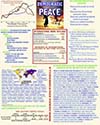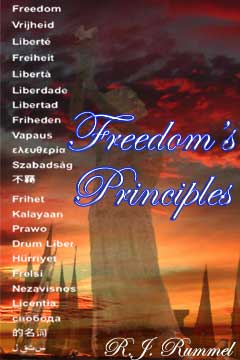I want to compare the democratic peace foreign policies of Presidents G.W. Bush and Bill Clinton to that of President Obama, which is uniquely his. I am not interested in particular policies or actions, but rather in specifying the paradigm underlying these policies, its operating procedures, and its world view.
In the last two centuries, Europe and the United States have gone through three foreign policy paradigms. Each was a measured way to keep the peace and deal with crises and threats to the major Powers that could lead to war. After the Napoleonic Wars ended in 1815, European Powers met in numerous conferences and congresses, in addition to consulting with each other, to first establish a new status quo, and subsequently to settle their issues (colonialism, freedom of the seas, navigation, new inventions, and the balance of world power). This is the jaw-jaw diplomacy paradigm. Possible antagonists should talk to each other to settle their differences. Thus, they had conferences on sanitary matters, statistics, maritime issues, free navigation of the Scheld, weights and measures, marine signaling, monetary questions, telegraphic signaling, metric system, railroad transportation, the slave trade, and so on.
When World War I bloodied Europe and reached into remote corners of the world, with nine thousand combat dead, it destroyed any intellectual pretentions that the meeting and talking paradigm led to a stable peace. In the global wreckage, even before the war was over, a new paradigm emerged. Irregular diplomatic gatherings were not enough. There must be a permanent international organization involving all nations and meeting regularly to deal with international issues and conflicts, help settle them, and above all, prevent violence — a League of Nations. Also, it seemed, international law must be refined and developed further to establish the universal rules of international relations and the use and morality of power. Major Powers must pursue disarmament through all means. And diplomacy has to be structured and directed through international organizations and in accord with international law. The goal was a lasting peace.
So, after the war the victors, excepting the U.S., formed the League of Nations. They paid much attention to formulating the international law of war and peace, and creating functional international organizations to meet general international needs. Disarmament conferences met and established the proper or proportional arms permitted the major powers. All this was just the right process to achieve permanent peace, or peace in our time. That intellectual illusion – the political idealist paradigm of international organizations, law, and disarmament — was blown apart by the bombs and 15 million combat dead of World War II.
Then a new paradigm emerged, a rigorous and systematic version of what has existed throughout the history of relationships between independent groups, whether tribes, city-states, or nation-states. This was the emphasis on power as the moderator of these relations, and on the balance of power as the critical instrument for diplomacy to work with. To see how old this idea is, read Thucydides’ History of The Peloponnesian War (perhaps published shortly after 411 B.C.). But after World War II the old idea of power and its balancing was refurbished and systematized in a paradigm called political realism. The primary source of this was the writings of Hans Morgenthau on international relations theory.
His book Politics Among Nations in 1948 was a revelation to many and a basic textbook among diplomats and students (it was mine). It was a paradigm change. Morgenthau claimed that objective laws govern international politics. At the heart, a nation’s interests are defined by power. The realistic diplomat must think in terms of power—of other nations alone or in combination, and how such power affects one’s own nation. With that in view, power must be balanced and diplomacy is the way to do so and to keep the peace. This is now the major paradigm of the American foreign policy establishment, but not necessarily Barack Obama’s.
How then does the democratic peace fit in? It is an opposing paradigm, seen as a return to idealism by the realists and in conflict with their view of foreign policy. More on this in Part IV.




 Posted by rudyrummel
Posted by rudyrummel 






